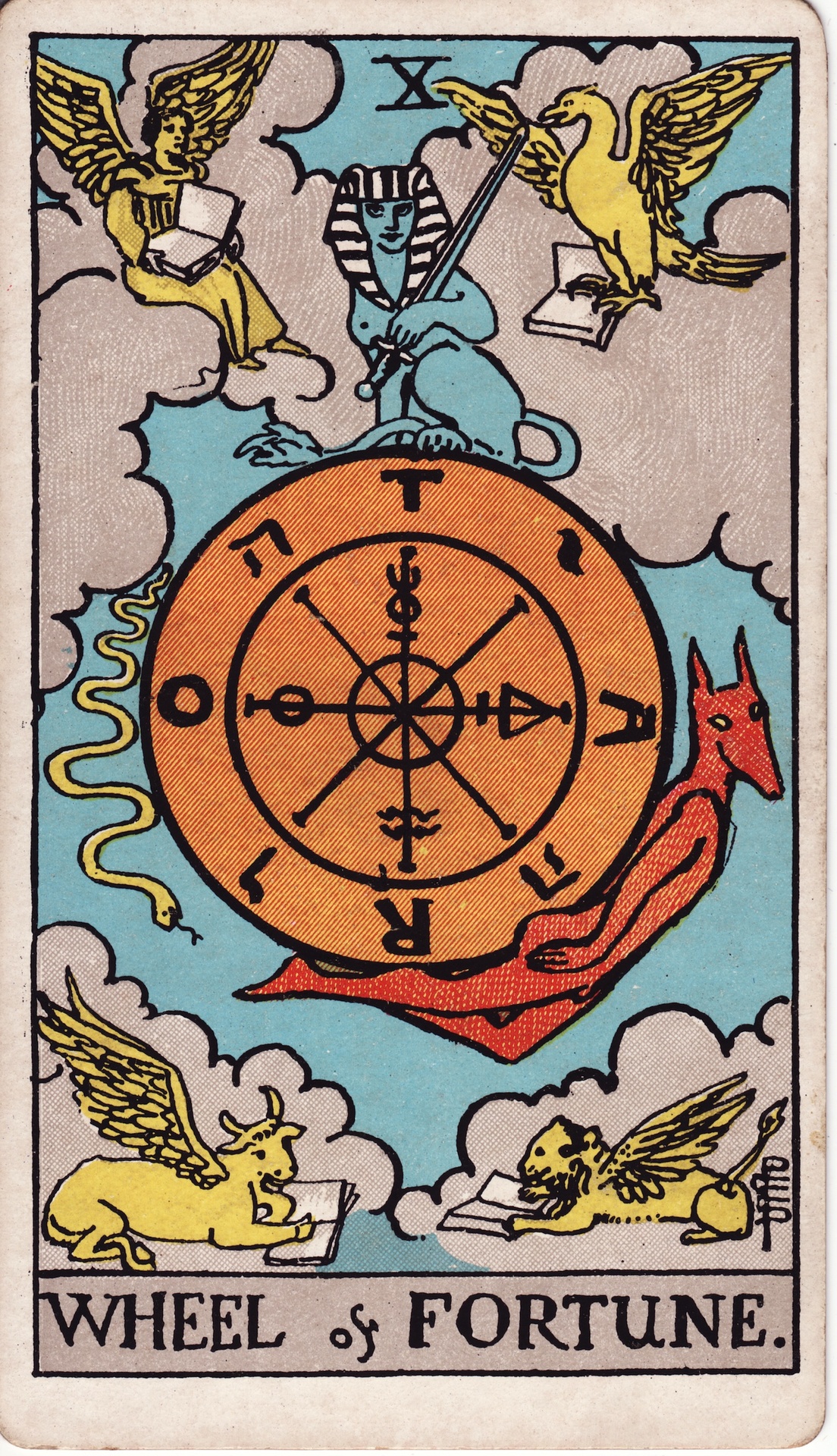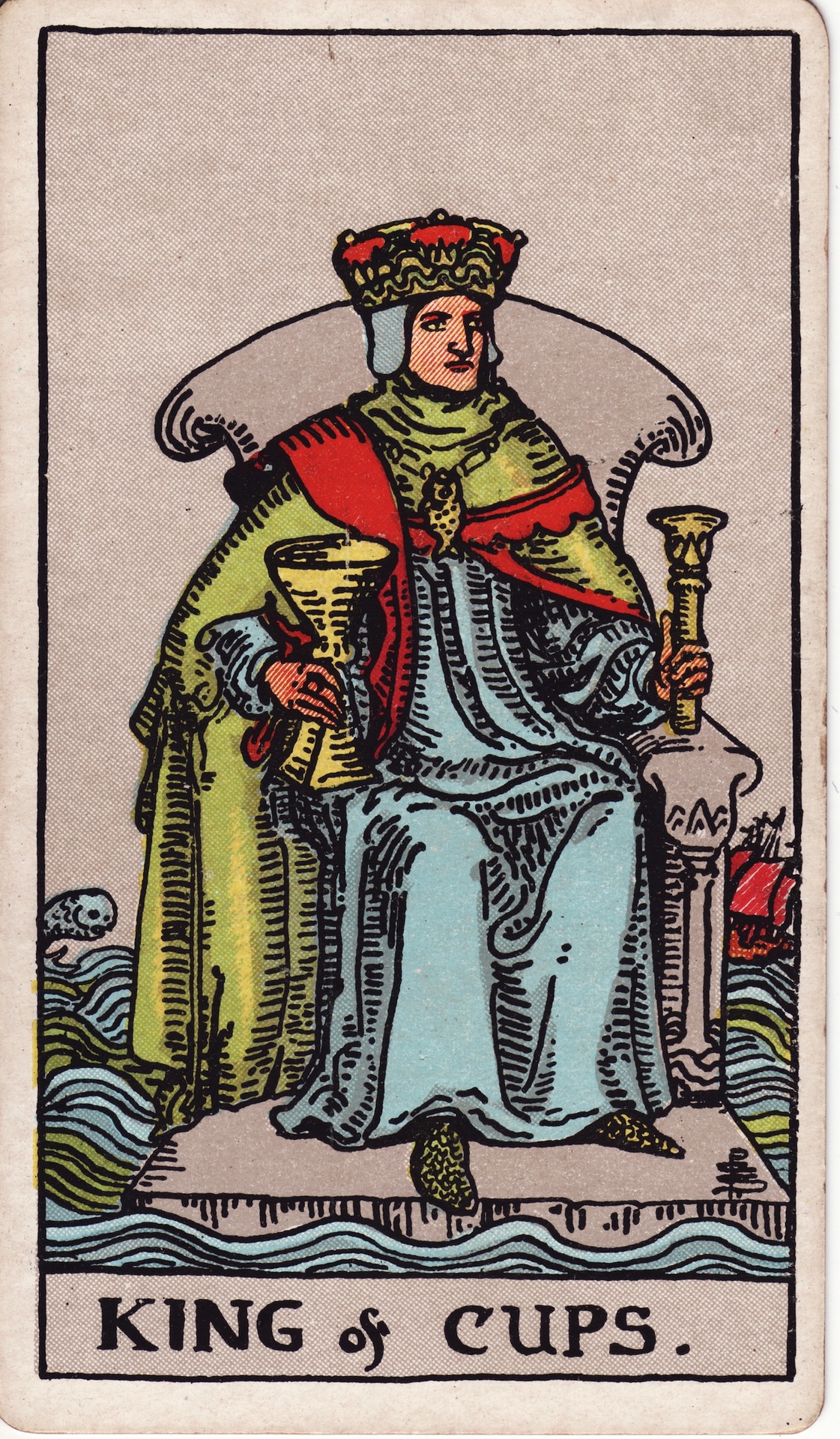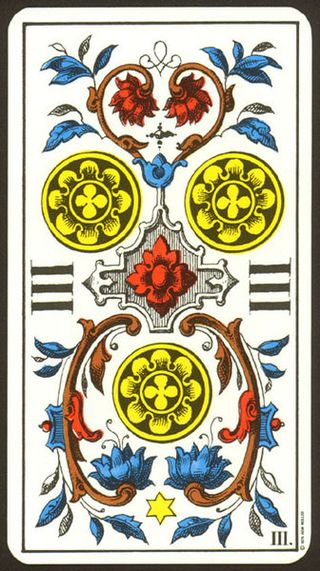
The Minor Arcana, sometimes known as Lesser Arcana, are the suit cards in a cartomantic tarot deck.

The Major Arcana are the named or numbered cards in a cartomantic tarot pack, the name being originally given by occultists to the trump cards of a normal tarot pack used for playing card games. There are usually 22 such cards in a standard 78-card pack, typically numbered from 0 to 21. The name is not used by tarot card game players.

The Rider–Waite Tarot is a widely popular deck for tarot card reading. It is also known as the Waite–Smith, Rider–Waite–Smith, or Rider Tarot. Based on the instructions of academic and mystic A. E. Waite and illustrated by Pamela Colman Smith, both members of the Hermetic Order of the Golden Dawn, the cards were originally published by the Rider Company in 1909. The deck has been published in numerous editions and inspired a wide array of variants and imitations. It is estimated that more than 100 million copies of the deck exist in more than 20 countries.

The High Priestess (II) is the second Major Arcana card in cartomantic Tarot decks. It is based on the 2nd trump of Tarot card packs. In the first Tarot pack with inscriptions, the 18th-century woodcut Tarot de Marseilles, this figure is crowned with the Papal tiara and labelled La Papesse, the Popess, a possible reference to the legend of Pope Joan.

The Empress (III) is the third trump or Major Arcana card in traditional tarot decks. It is used in card games as well as divination.

Strength is a Major Arcana tarot card, and is numbered either XI or VIII, depending on the deck. Historically it was called Fortitude, and in the Thoth Tarot deck it is called Lust. This card is used in game playing as well as in divination.

Wheel of Fortune (X) is one of 78 cards in a tarot deck and is the tenth trump or Major Arcana card in most tarot decks. It is used in game playing as well as in divination.

Temperance (XIV) is one of the 22 Major Arcana cards in Tarot decks. It is usually numbered 14. It depicts a figure which represents the virtue Temperance. Along with Justice and Strength, it is one of three Virtues which are given their own cards in traditional tarot. It is used in both game playing and in divination.

The World (XXI) is the 21st trump or Major Arcana card in the tarot deck. It can be incorporated as the final card of the Major Arcana or tarot trump sequence (the first or last optioned as being "The Fool" (0). It is associated with the 22nd letter of the Hebrew alphabet, 'Tau', also spelled 'Tav' or 'Taw'.

"The Bitter Suite" is the twelfth episode of the third season of the American-New Zealand fantasy adventure series Xena: Warrior Princess, which premiered on February 2, 1998. The episode, a musical, was written by Chris Manheim and Steven L. Sears and directed by Oley Sassone.

The Two of Wands is a Minor Arcana tarot card.

The Page of Wands is a card used in Latin-suited playing cards which include tarot decks. It is part of what tarot card readers call the Minor Arcana.

The Ten of Cups is a Minor Arcana tarot card.

The King of Cups is a card used in suited playing cards, which include tarot decks. It is part of what esotericists call the Minor Arcana.

The Queen of Swords is a card in the suit of swords, part of the Minor Arcana set of the tarot.

Nine of Coins is a card used in Latin-suited playing cards which include tarot decks. It is part of what tarot card readers call the "Minor Arcana" and represents a financially independent aristocrat.

The suit of coins is one of the four suits used in tarot decks with Latin-suited cards. It is derived from the suit of coins in Italian and Spanish card playing packs.

The Ace of Wands is a tarot card of the Minor Arcana, arcana being Latin for mysteries. The cards of the Minor Arcana are considered to be lesser compared to the Major Arcana because they discuss the minor mysteries of life, less important archetypes. Modern tarot readers interpret the Ace of Wands as a symbol of optimism and invention.

The suit of wands is one of four suits in tarot, collectively known as the Minor Arcana. Like the other tarot suits, the suit of wands contains fourteen cards: ace (one), two through ten, page and knight, queen and king. When Tarot cards are to play Tarot card games, where wands corresponds to the suit of batons. Tarot cards came to be utilized for divinatory purposes by esotericists such as Eliphas Levi and were regularized into the divinatory form most known today by the Hermetic Order of the Golden Dawn and the Rider–Waite Tarot, created by a Golden Dawn member.

The suit of goblets, more often known in modern times as the Suit of Cups, is one of four suits of tarot which, collectively, make up the Minor Arcana. They are sometimes referred to as chalices. Like the other suits of the Minor Arcana, it contains fourteen cards: ace (one), two through ten, page, knight, queen and king. Historically, the suit represented the First Estate. Tarot cards were originally designed for card play and are still used throughout much of Europe to play various Tarot card games. However, in English-speaking countries, where the games are largely unknown, Tarot cards came to be utilized primarily for divinatory purposes. In modern card games, the equivalent suits are Hearts or Cups.




















